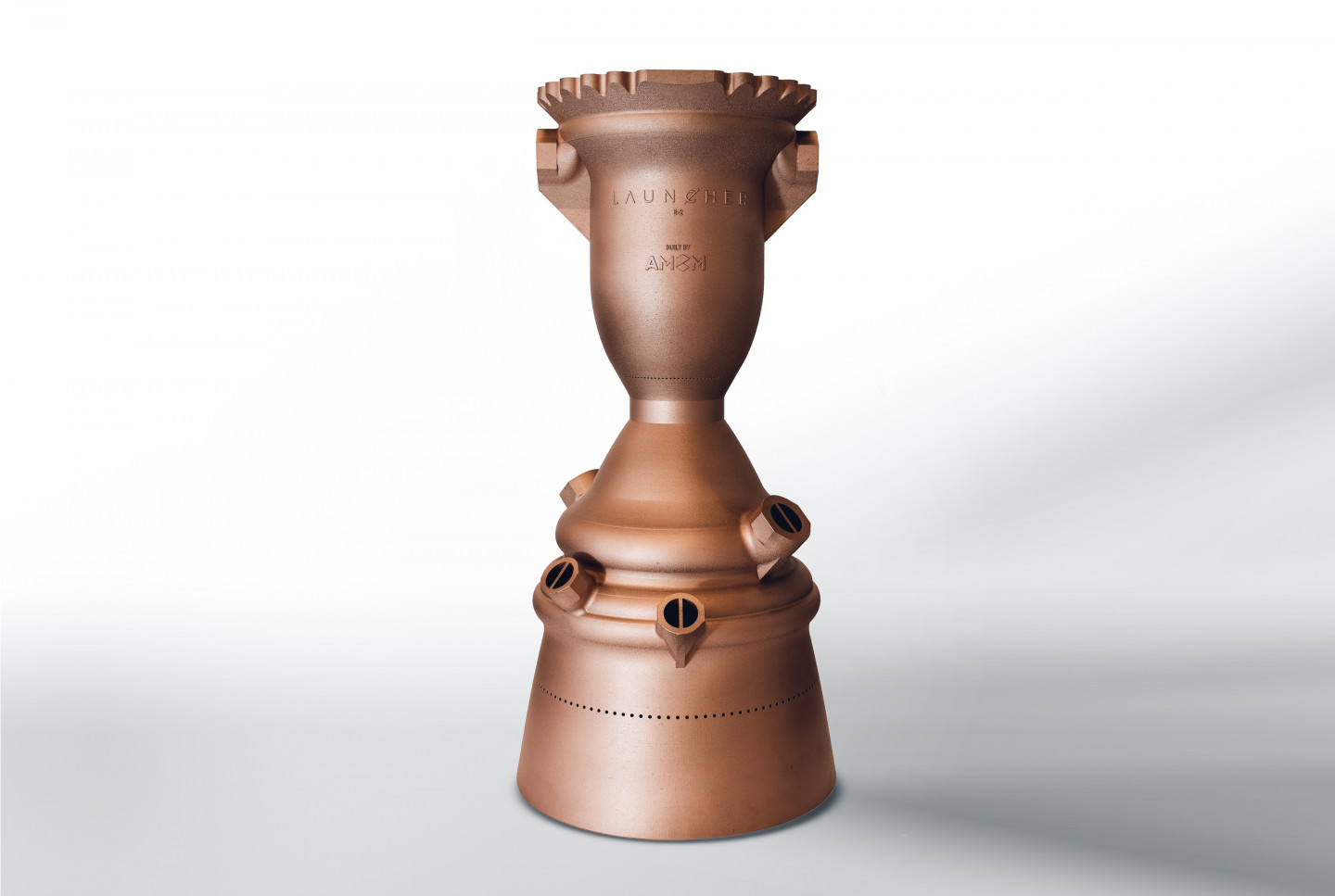
The New York start-up Launcher is unlike most other rocket companies. With a small team of 8 people, Launcher is working to create the highest performance rocket for small sat launches.
In order to achieve those goals, rather than racing to orbit, founder and CEO Max Haot is taking it slower; working with a small team he plans to keep efficiency as one of the main goals. One of the ways he is doing this is with the use of additive manufacturing, more commonly referred to as 3D printing. The 3D printers most people are familiar with are called FDM printers. FDM stands for Fused Deposition Modeling. Most of these printers use a long strand of plastic filament and feed it through a hot end which melts the plastic. The hot end is moved over a build plate to slowly build up layers of plastic.
Producing the Launcher’s E-2 Combustion Chamber
The 3D printer used to create Launcher’s “Engine 2” combustion chamber, on the other hand, is an SLS 3D printer. SLS (in this context) stands for Selective Laser Sintering. These printers lay down an even layer of metal powder, then use a laser to melt the powder in specific locations. Thousand of layers of powder are added then melted by the laser to create a final part. Launcher has partnered with AMCM to produce the combustion chambers using an AMCM M 4k 3D printer. This printing process is similar but distinct from the Electron Beam Melting process which Rocket Lab uses to 3D print their Rutherford engines, as SLS (still the printer, not the rocket) requires additional heat treatment which Electron Beam Melting does not.
One complication with the process is that the part is surrounded by a fine metal powder. In order to clean the metal from the fine internal cooling channels Launcher is using a specialized machine made by Salukon specifically for this purpose. They released a video of one of their E-2 combustion chambers in the automatic de-powdering machine.
Back in 2018, Launcher released a video showing portions of the end-to-end process from design to test firing. This is with their older E-1, and uses a different printer, but gives a good perspective on how the advancing technology has assisted them in creating high-performance engines efficiently.
As technology here on Earth develops we are able to go farther and learn more about space, and as we reach for new developments in space we create new technology to benefit us here on Earth.
Want to help support Space Explored?
Shop on Amazon to support Space Explored Writers.
Enjoy reading Space Explored?
Help others find us by following on Apple News and Google News. Be sure to check us out on YouTube, Twitter, Facebook, and Instagram, join our Discord!
FTC: We use income earning auto affiliate links. More.



Comments